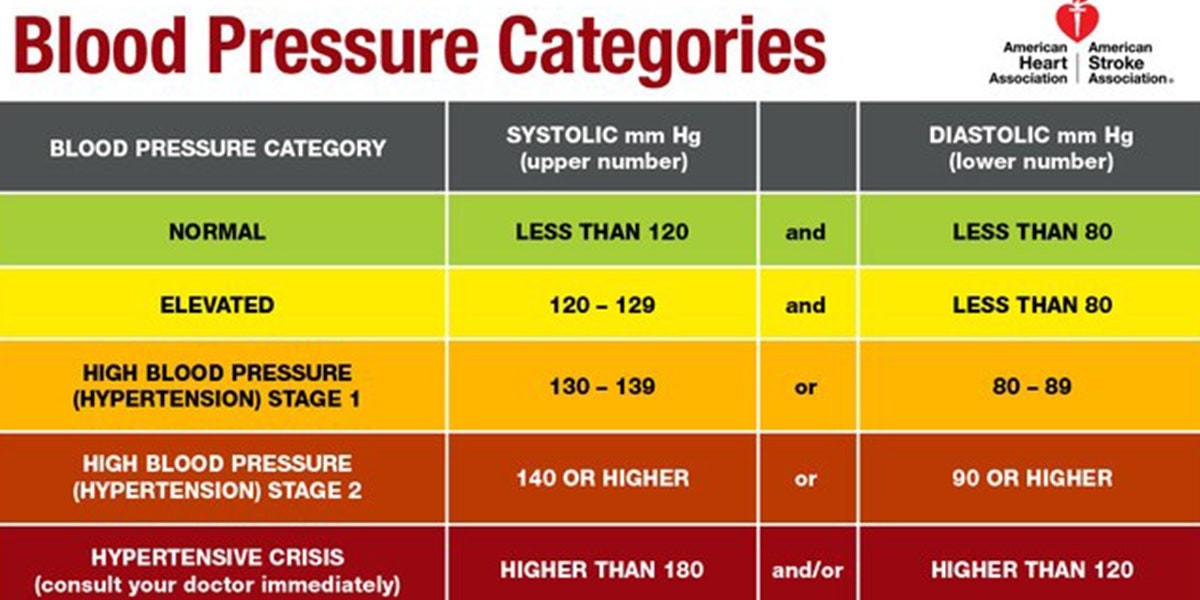
Contents
Meaning of Blood Pressure over 100
Diastolic blood pressure (DBP) is the pressure on the artery walls when the heart relaxes between beats. When the bottom number of blood pressure (diastole) exceeds 100 mmHg, it may be called diastolic hypertension (DHT).
Diastolic hypertension (DHT) is when the bottom number of blood pressure (diastole) exceeds 100 mmHg. The normal diastolic pressure range for adults is 60 to 80 mmHg. Anything above this is considered abnormal (hypertension ). However, readings above 180/120 mmHg are dangerous and require immediate medical attention.
- DBP is the pressure on the artery walls when the heart relaxes between beats.
- A high diastolic reading is linked to a higher risk of diseases involving the aorta, the large artery carrying blood from the heart to the abdomen and chest.
- Elevated DBP is associated with an increased risk of developing an abdominal aortic aneurysm, which can be life-threatening.
- An enlarged aorta can lead to rupture and a high risk of death.
- Studies show that elevated DBP may be linked to cognitive impairment in individuals 45 years and older. Each 10-point increase above 90 mmHg is associated with a 7 percent higher risk of cognitive problems. By preventing or treating high blood pressure, we may potentially prevent cognitive impairment.
- DBP over 100 mmHg (DHT) is associated with a significant incidence of strokes.
Causes of DHT
DHT is most commonly associated with:
- Increased body mass index (obesity)
- Increased glucose level
- Increased alcohol consumption
- High triglyceride levels
- Family history of hypertension
- Previous cardiovascular events
- Male gender (slightly higher risk)
Treatment options for DHT
- Treatment is not required for young individuals with low cardiovascular risk. Treatment in elderly people should be personalized to address underlying cardiovascular disease while maintaining DBP above 70 mmHg.
- Lifestyle measures and weight loss should be initiated.
- Calcium channel blockers, angiotensin-converting enzyme inhibitors, angiotensin receptor blockers, and diuretics are commonly used medications for DHT.
Understanding Diastolic Blood Pressure
Diastolic blood pressure refers to the blood pressure reading during the heart’s relaxation phase (diastole). Blood pressure is the force of blood against the arterial walls. It is measured in mmHg because mercury was used in the first accurate pressure gauges. Systolic pressure is measured when the heart actively contracts, while diastolic pressure is measured when the heart is relaxing. Diastolic pressure is lower than systolic pressure.
Blood pressure is expressed as two numbers, with systolic pressure preceding diastolic pressure. For example, a blood pressure reading of 130/80 mmHg means the systolic pressure is 130 mmHg and the diastolic pressure is 80 mmHg. A systolic pressure below 120 mmHg and a diastolic pressure below 80 mmHg are considered normal. A blood pressure reading below 90/60 mmHg is considered low blood pressure (hypotension).
Both diastolic and systolic blood pressure determine the risk of cardiovascular diseases, including ischemic heart disease such as heart attack. Studies show that the risk of death from heart disease and stroke doubles with every 20 mmHg increase in systolic pressure or 10 mmHg increase in diastolic pressure for individuals aged 40 to 89.
Causes of Low Diastolic Blood Pressure
Low diastolic blood pressure may be caused by age-related arterial stiffening, which affects the heart’s ability to receive blood during diastole. Causes of low diastolic blood pressure include:
- Prolonged bed rest
- Excess sweating leading to dehydration
- Reduced water intake
- Diarrhea leading to loss of water in stools
- Medications such as diuretics, antihypertensive medications, medications for Parkinson’s disease, and tricyclic antidepressants causing loss of water in urine
- Alcohol consumption leading to dilation of blood vessels, lower diastolic blood pressure, lower heart rate, and heart-related disorders
- Hormonal deficiencies and endocrine dysfunctions
- Allergic reactions
- Nutritional deficiencies
- Prolonged standing causing blood pooling in the legs
Common signs and symptoms of low diastolic blood pressure include thirst, breathlessness, light-headedness, fainting, dizziness, confusion, dullness, sweating, and nausea.
Studies have found that very low diastolic blood pressure is associated with an increased risk of heart disease and coronary events. Low diastolic pressure may lead to reduced blood flow and insufficient oxygen supply to the heart muscle. Normalizing both diastolic and systolic blood pressure is essential for a healthy heart.
Is Low Diastolic Blood Pressure Dangerous?
Low diastolic blood pressure can have serious consequences. Diastole is the phase when the heart is relaxing, and the blood flows through the coronary arteries to supply oxygen and nutrients to the heart.
- Low diastolic pressure can reduce blood flow through the coronary arteries, increasing the risk of reduced oxygen and nutrient supply to the heart.
- Low diastolic blood pressure is also associated with a widened pulse pressure, indicating increased arterial stiffness and atherosclerosis.
- Low blood pressure may increase the risk of falls or accidents due to dizziness or fainting.
- If you have low blood pressure or experience symptoms of low blood pressure, such as dizziness or fainting, it is important to consult a doctor.
Is a Diastolic Blood Pressure of 64 mmHg Too Low?
A diastolic pressure below 60 mmHg is generally considered serious. A diastolic pressure of 64 mmHg is not too low, but individual variations exist. If you experience symptoms of low blood pressure, seek medical help.
Diastolic blood pressure below 60 mmHg with a systolic blood pressure of 100 mmHg or higher is known as isolated diastolic hypotension.
By clicking "Submit," I agree to the MedicineNet Terms and Conditions and Privacy Policy. I also agree to receive emails from MedicineNet and understand that I may opt out of MedicineNet subscriptions at any time.
Medscape Medical Reference
American Journal of Hypertension


